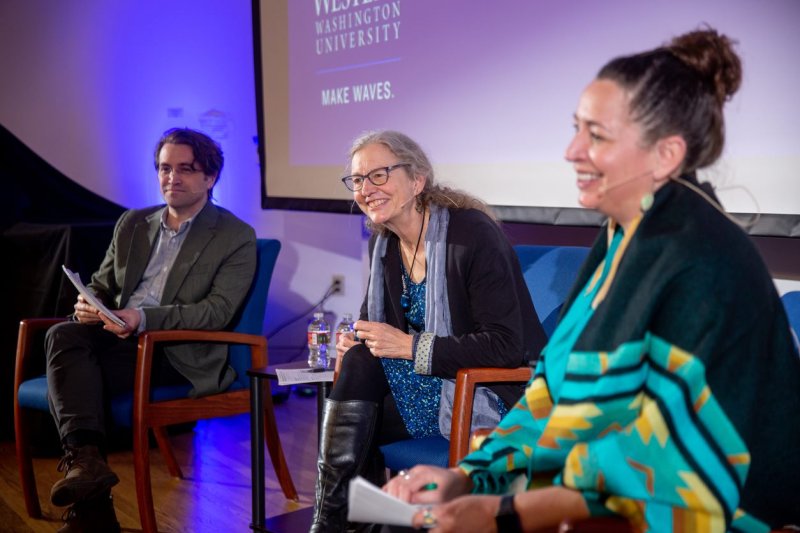US Holocaust Museum's Annual Meyerhoff Lecture held in a packed Fraser Hall
On Friday, April 7, Western hosted the U.S. Holocaust Museum’s Joseph and Rebecca Meyerhoff Annual Lecture titled “Teaching Exclusion in Nazi Germany and the United States: Antisemitism and Racist Ideology in the Classroom from 1920 to 1945,” in a packed Fraser Hall.
The lecture focused on Nazi Germany’s efforts to expel Jews from higher education and how Nazi leaders modeled their plans on the U.S. use of residential boarding schools to “assimilate” Indigenous people in this country.
The event had more than 400 people registered, all seeking to better understand the lasting effects of these moments in human history, and to examine how some countries and cultures have created a false sense of human belonging through intentional exclusion.
The annual Meyerhoff Lecture is one of the United States Holocaust Museums’ (USHMM) oldest academic lectures, endowed by Joseph and Rebecca Meyerhoff of Baltimore, Maryland, in 1994 to honor excellence in research and foster dissemination of scholarly work in Holocaust Studies.
The event’s moderator, Holly Mackey, is an enrolled member of the Northern Cheyenne nation in Southeastern Montana and an associate professor of Education at North Dakota State University.
The speakers were Margaret D. Jacobs, a history professor at the University of Nebraska-Lincoln, and Adam Knowles, a lecturer in the Department of Philosophy at the University of Zurich in Switzerland.
Knowles spoke about power exclusion and antisemitism within school curricula during the Holocaust.
According to Knowles, the university was an essential resource for Germany’s nation-building projects. University students were seen as the next generation of the Nazi elite, especially after the 1933 Law for the Restoration of Professional and Civil Service purged Jewish students and faculty from higher education in Germany.
“There was a goal to create mass complacency,” said Knowles when he was asked about resistance efforts during this time.
Knowles told the story of Sophie Scholl, a 21-year-old student and a member of the White Rose Resistance at the University of Munich.
The group was involved in the distribution of pamphlets and leaflets questioning the Nazi regime. After a janitor saw Scholl and others distributing pamphlets, they were beheaded for treason.
Jacobs said the efforts of using education to “assimilate” Indigenous families into a more Westernized culture began with the Civilization Fund Act of 1819.
“The American ideology was very different from the Nazis’ because it wasn’t about purging them from education. It was about using education as its own kind of weapon against their culture,” said Jacobs.
Mackey expressed the importance of being able to talk about these topics together and recognizing history.
“We should never be in the business of ranking oppressive experiences,” said Mackey. “We need to think about how we can listen together.”
Co-sponsors of the event included the WWU Tribal Relations Office, the College of Humanities and Social Sciences, and the Ray Wolpow Institute. To learn more about USHMM and the Joseph and Rebecca Meyerhof Annual Lecture, visit USHMM.org.
